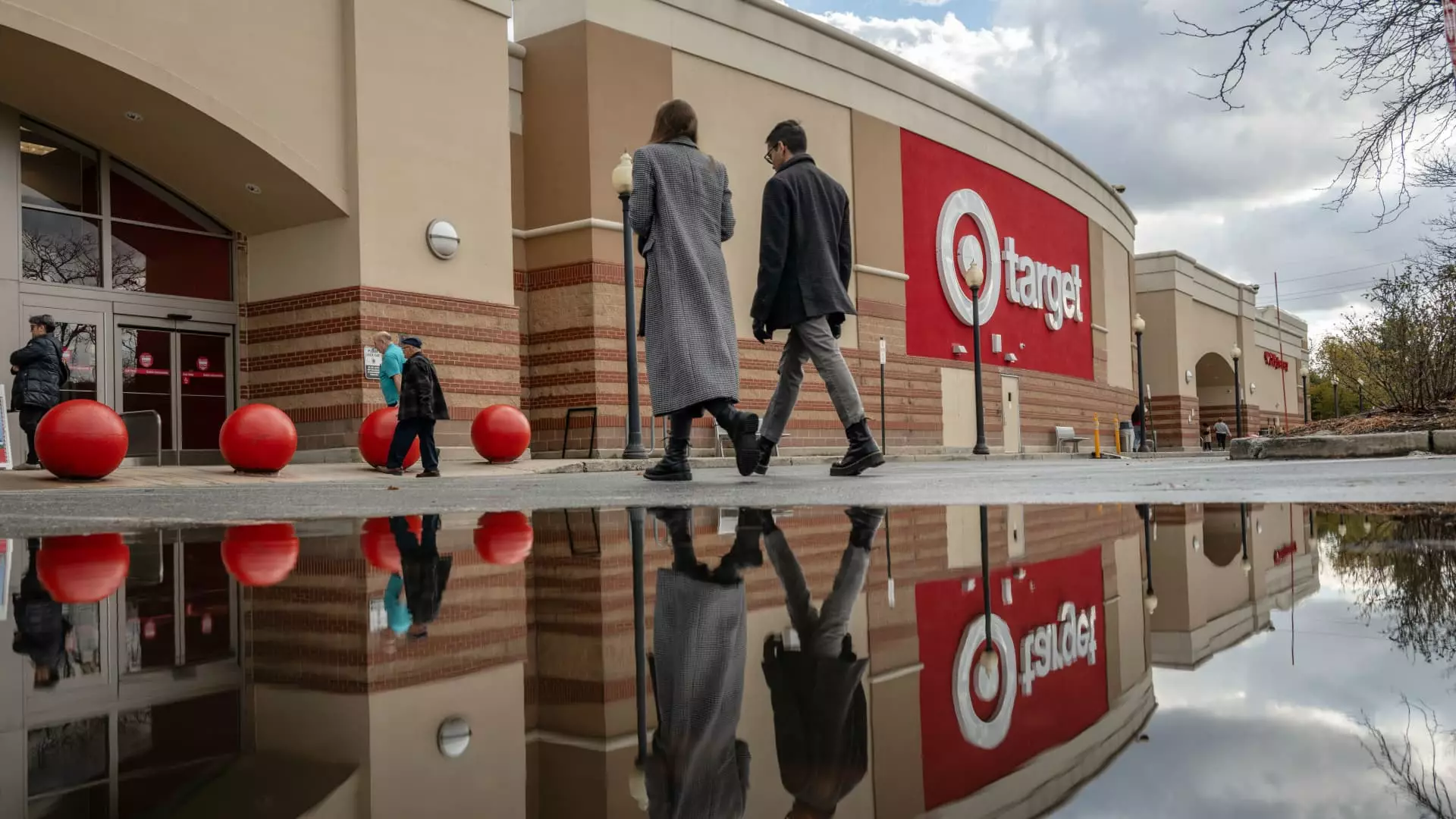The holiday shopping season has always been a pivotal time for retailers, offering a chance to attract varied consumers and boost sales of discretionary items. As 2023 draws to a close, this year’s holiday season presents a stark contrast among retailers. While some companies thrive, capturing the wallets of discerning shoppers, others report disappointments. Understanding this divide can offer insights into consumer behavior, economic conditions, and retail strategies that may define the landscape for years to come.
Recent earnings reports have underscored an apparent dichotomy within the retail sector. Companies like Target, Kohl’s, and Best Buy have unveiled underwhelming financial results for their third quarters, raising concerns about their market position as they approach the festive season. In contrast, retailers such as Walmart, Dick’s Sporting Goods, and Abercrombie & Fitch are reporting robust sales growth, suggesting a successful strategy that resonates with today’s budget-conscious consumers. This divergence in performance seems to stem from varying approaches to pricing, inventory management, and consumer engagement.
The consumer landscape in the U.S. has fundamentally shifted, particularly following more than two years of inflation that significantly changed spending habits. According to Neil Saunders from GlobalData Retail, shoppers today are more selective, often opting for fewer purchases. This trend could be attributed to increased expenses in essential areas like groceries and housing, making consumers more discerning about where they allocate their discretionary spending. Under such circumstances, weaker retailers may find themselves edged out of consumers’ minds as shoppers prioritize brands that offer value and relevance.
With the holiday shopping season in motion, projections for spending reflect cautious optimism. The National Retail Federation (NRF) anticipates a moderate increase in holiday spending, estimating a rise of 2.5% to 3.5% over the previous year. This increase, while positive, pales compared to the higher rates observed in earlier years. For many brands, the focus is not solely on growth but rather on navigating the complexities of consumer sentiments.
Retailers like Dick’s and Abercrombie have adjusted their forecasts positively. Their ability to attract early shoppers is a testament to effective marketing strategies and appealing product assortments. Abercrombie’s COO, Scott Lipesky, emphasized the brand’s readiness for heightened sales activity, hinting at a well-timed product launch for the holiday season. Conversely, companies like Nordstrom adopted a more careful stance, acknowledging slower shopping trends and future challenges despite a third-quarter performance that beat expectations. This caution reflects a broader uncertainty about consumer behavior as holiday shopping peaks.
In response to their muted forecasts, retailers like Target are experimenting with innovative marketing strategies to lure customers. The company has introduced over 150 products linked to popular culture, such as items inspired by Universal’s “Wicked” movie. Additionally, Target intends to enhance its holiday offerings with exclusive merchandise for Taylor Swift fans. These tactics aim to drive traffic and capture consumer interest in an increasingly competitive marketplace.
Meanwhile, other brands are implementing strategic price cuts to attract price-sensitive customers. Target recently announced further reductions across thousands of its products. This move echoes a larger trend where retailers are compelled to offer value, emphasizing that the most successful retailers this season will be those that understand and meet the specific needs of their consumers.
The current economic environment has shifted consumer behavior towards practicality. As articulated by Saunders, there’s a growing preference for gifts that provide tangible value rather than frivolous items. Retailers focusing on experiences or products with practical applications are likely to fare better than those selling novelty items with less perceived value.
This behavior is sending a strong message to retailers that they must reassess their product assortments and strategize accordingly. If retailers misjudge inventory levels, as seen with certain sectors overstocked on less desirable items, they may risk surplus stock taking up shelf space, leading to clearance challenges. Effective inventory management and consumer engagement are crucial for converting foot traffic into sales.
Looking forward, the retail landscape remains fraught with uncertainties. Retailers are keenly aware of potential external factors that could impede sales, such as unfavorable weather or unforeseen supply chain disruptions. History shows that retailers often prepare excuses for potential shortcomings, emphasizing the need for adaptability in their strategies.
In sum, navigating the intricate dynamics of the 2023 holiday shopping season requires retailers to balance pricing strategies, inventory management, and an understanding of changing consumer preferences. By doing this, those left standing as winners will be the ones that can pivot and innovate to meet the evolving needs of today’s consumers, while others fade into the backdrop of retail history.

Leave a Reply